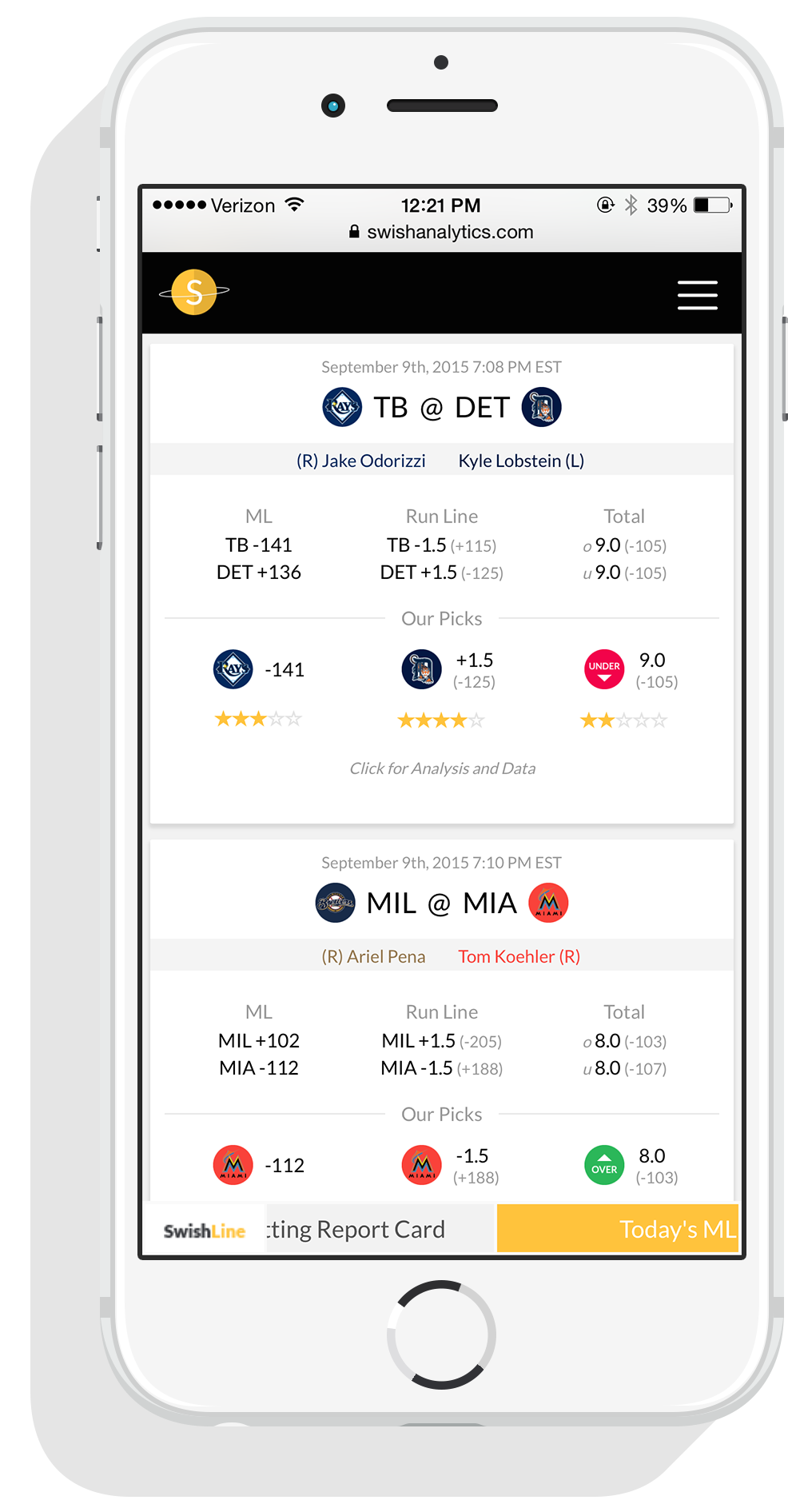
Data science can take us to a whole new level of accuracy. Over the course of a season, this effect can cripple a naive model.
Swish analytics series#
In even a single seven-game series, it’s easy to see cases where the team winning the series (by winning four of seven games) actually had fewer total runs - typically because that winning team was blown out in one or two games on their way to eventual series victory. However, this doesn’t take into account close games. After all, a naive first pass at this would be: the more runs you score, the more games you will win. It may not surprise you that data science is able to predict, with a high degree of accuracy, a win-loss record from the difference between runs scored and runs allowed. The probability of winning is defined as: The famous sabermetric, Pythagorean expectation, is an attempt to curve-fit across a two-dimensional plane of data. Team-level analytics include correlating the number of runs scored and runs allowed to predict the number of wins and losses. Today, many teams use large-scale analysis of player performance, including external factors that influence performance. As Moneyball illustrated so colorfully, evaluation in the past was often based purely on gut. The data science approach accounts for 50 to 100 different factors to derive a metric to more-effectively reflect a player’s potential. In doing so, data science takes into account factors that may not be captured in a simple average.Īs an example, plain old batting average is not comparable unless the quality of the league (major league, minor league, Triple-A, Double-A etc.), the quality of opposing team’s pitching and fielding strength, the size of the ballparks, etc. Rather than use batting average, data science encourages measuring player effectiveness with more sophisticated measures like equivalent average and total player rating. Features that are significant contributors are identified, named, and measured for each player as they progress through their high school, college and minor league games.

The point of sabermetrics is to identify data that more correctly aligns with the goal of a batting team scoring runs or the fielding team restricting opponents.
Swish analytics movie#
And at best, you may be inspired to up your own game with a healthy serving of data science.ĭata science in sports recruiting reached prominence in the movie Moneyball and the approach to analysis known as "sabermetrics" in Major League Baseball. At minimum, you’ll get new insight into some of your favorite games. Teams can unearth valuable insights to drive improved performance on the field as well as well-managed post-performance recovery.ĭata science is already making a dramatic impact in sports - let’s take a look at some of the use cases. This results in a huge amount of data ripe for analysis. Teams are starting to systematically track and record every aspect of the game. As competition heats up, teams look for an edge. It does not store any personal data.Data science is all around us - you just have to look. The cookie is set by the GDPR Cookie Consent plugin and is used to store whether or not user has consented to the use of cookies. The cookie is used to store the user consent for the cookies in the category "Performance". This cookie is set by GDPR Cookie Consent plugin. The cookie is used to store the user consent for the cookies in the category "Other.

The cookies is used to store the user consent for the cookies in the category "Necessary".

The cookie is set by GDPR cookie consent to record the user consent for the cookies in the category "Functional". The cookie is used to store the user consent for the cookies in the category "Analytics". These cookies ensure basic functionalities and security features of the website, anonymously. Necessary cookies are absolutely essential for the website to function properly.


 0 kommentar(er)
0 kommentar(er)
